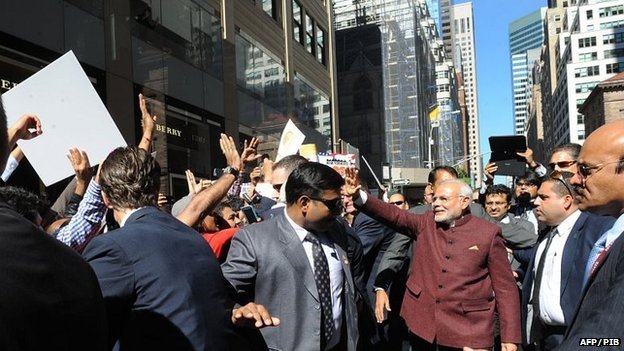Can India Capitalize on a Landmark 2014?

Please note that we are not authorised to provide any investment advice. The content on this page is for information purposes only.
India had a landmark year in 2014. A new political, cultural and economic reality is emerging.
India had a landmark year in 2014. A new political, cultural and economic reality is emerging.
The trend of political fragmentation that started with the general election in 1989 and saw a succession of coalition governments over the next 25 years reversed. The Bharatiya Janata Party (BJP) swept to power in Delhi with an unprecedented and unexpected majority in the parliamentary elections. The year ended with an even bigger surprise: the BJP secured the highest percentage of votes in the Jammu and Kashmir election (though with the second highest number of winning candidates) after winning handsomely in major states such as Maharashtra, Rajasthan, Madhya Pradesh, and Haryana.
The once invincible Indian National Congress received a historically low 18 percent of the vote, reduced to a rump with a mere 44 seats in the lower house. India now has a non-Congress political formation in office not only in Delhi but in all but three states capitals as well. Among the major states, Congress is made of Assam, Kerala and Karnataka, which together account for a mere 15 percent of the population. It seems that 2014 brought down the curtain on the Nehruvian era in India’s political economy. The key question is whether this marks the beginning of a period of sustained political stability and economic dynamism.
The new reality will force us to re-think the idea of ‘India’. The Indian elite — across the entire spectrum of politics, business and commerce, academia and the media — is no longer composed only of committed anglophiles: it is now an indigenous and regionally diverse group. While Indian English may well remain the lingua franca, a political leadership that has strong domestic and indigenous roots and sensibilities will henceforth drive India’s political economy.
Further, middle class values and aspirations are now the dominant drivers for the great majority of Indians — irrespective of religious, regional and linguistic affiliations. Indians, driven by their middle class aspirations, will now demand partnerships and will not take kindly to patronising behaviour on the part of their bilateral international partners.
The post-1991 generation — probably voting for the first time in these elections — has grown up unaware of the scarcities, shortages, and lack of job opportunities at home, which characterised the previous four decades. This has made the younger generation more self-confident. Moreover, the middle class Indians see themselves as a part of the global community and have zero patience for those who attempt to hoodwink them with populist rhetoric or condescending handouts. The present generation demands the provision of public services and physical infrastructure that will enable them to compete internationally and raise their living standards. Driven by this pressure, the central and state governments will welcome partner countries and global companies that contribute to the creation of physical infrastructure and better provision of public services in India.
The government abolished the Planning Commission, demonstrating its preference for an open economy and a greater role for the private sector. It now needs to follow this up with even bolder steps to attract FDI that will allow India to access and utilise frontline technologies. This FDI, combined with India’s large and skilled labour force, could help to pitch India into the ranks of leading global economies. The government will need to improve the business environment and reduce uncertainty and regulatory sclerosis faced by both domestic and foreign investors. But there are positive signs that the Modi government is approaching this task with clear timelines and commitment.
India today is characterised by increased economic openness; a greater influence on the global economy through its domestic events; a greater role played by the private sector; an explosion in communications and media; and the sure but steady elimination of the dualism of modern ‘India’ and the traditional ‘Bharat’. India is back on the path to a greater than 8 percent GDP growth rate, well ahead of the next parliamentary elections in 2019. The future is bright for India.
A new India is rising is republished with permission from East Asia Forum




